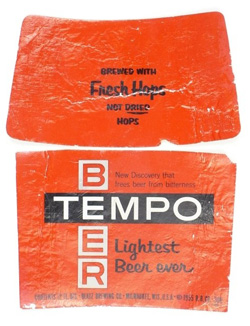MONDAY BEER LINKS, MUSING 01.05.15
Session 95: Those Unwritten Books And Happy Marriages…
This month’s Session resulted in a feast of links, nicely organized by host Alan McLeod. Excellent commentary included. [Via A Good Beer Blog]
Sierra Nevada’s New Hop Hunter IPA Is Like No Other Beer in Its Class.
Reducing this to very unsexy basics: Sierra Nevada Brewing will soon release an IPA made with concentrated essential oils gathered from unkilned hops using steam distillation. Writing for Esquire, Aaron Goldfarb flushes out the details and offers a tasting note: “Like most wet hop beers, Hop Hunter is extraordinarily floral and aromatic, like sticking your nose into a freshly-picked plant or flower bouquet. It’s not really bitter-tasting either, certainly not as bitter as your typical IPAs.”
 I’d like to know more about the process, and if I did I would share it with you. It feels like there are implications beyond if Hop Hunter IPA is a “best of class” beer. I will be in full research mode late this month at the American Hop Convention in San Diego and will report back.
I’d like to know more about the process, and if I did I would share it with you. It feels like there are implications beyond if Hop Hunter IPA is a “best of class” beer. I will be in full research mode late this month at the American Hop Convention in San Diego and will report back.
Almost 50 years ago, Blatz Brewing in Milwaukee sold its own version of a “fresh hop” beer called Tempo. At the time, Blatz president Frank Verbest said the brewery spent two years and hundreds of thousands of dollar coming up with the process to brew the beer, partnering with companies outside the brewing industry. He likened it to distilling crude oil into gasoline and other derivatives. (The online version of the Milwaukee Journal can be a little difficult to read — I quoted from it extensively three years ago.)
A few years later, Fortney Stark sued Blatz, claiming they had not honored a 1954 deal in which he turned over his secret process for this extracting process. His patent describes a process that most often uses methanol as an extractive. The extract was then “concentrated to any desired degree by evaporation or distillation to expel the solvent.” So a different process and — given the beer was advertised as “a new discovery that frees beer from bitterness’ — a different intent than Sierra Nevada has for this IPA. [Via Esquire and Jess Kidden]
Process or ingredients?
A couple of days after Christmas I visited Jester King Brewing outside of Austin to talk about, and taste, beers that reflect where they are brewed. One of the first things Jeff Stuffings asked me is if this indigenous-American book beer I’m working on will be focused more on ingredients or process. A fair question, since I wanted to talk about how they integrate locally cultivated ingredients in the beer, about their unique mixed-culture yeast, and about local water, among other things. However, the answer has to be both. It won’t do to simply list ingredients that brewers used 300 years ago or are including now. How they were or are prepared, when they were or are added, those things matter. Eight days later, quite interesting to read what Lars Marius Garshol has to write about the same situation in Norway. [Via Larsblog]
In Belgium, Battle Builds Between Brewers and ‘Beer Architects’.
The Wall Street Journal catches up with something Joe Stange wrote for Belgian Beer & Food last spring, but that one is not online. Imagine the conversations we’ve been having here for a very long time in the U.S. taking place in Flemish and French. [Via Wall Street Journal]
Breweries that Closed.
Even in Beervana, breweries fail. From Bryan Yaeger: “Ostensibly this is a story about breweries you’ve likely never tasted beer from or possibly heard of–such as Bull Ridge or Blue House–but what good is reading an obit for someone you’ve never met or read about unless you can put their life in context? So before we start to eulogize the not-really-dearly departed, let’s consider this a living wake.” [Via The New School]
Guide to opening a hipster cafe.
h/T to Max Bahnson for pointing to this and suggesting, via Twitter, “Replace a few words with “Craft Beer” and you’ve got the perfect guide to opening a Beer Bar.” [Via Imbur]
 I’d like to know more about the process, and if I did I would share it with you. It feels like there are implications beyond if Hop Hunter IPA is a “best of class” beer. I will be in full research mode late this month at the
I’d like to know more about the process, and if I did I would share it with you. It feels like there are implications beyond if Hop Hunter IPA is a “best of class” beer. I will be in full research mode late this month at the  Three-time Session host Alan McLeod — the first three-time host — has
Three-time Session host Alan McLeod — the first three-time host — has